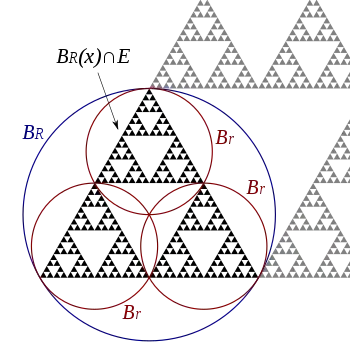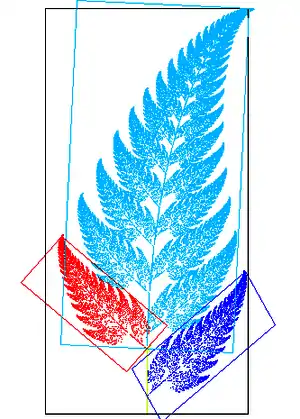Assouad dimension
In mathematics — specifically, in fractal geometry — the Assouad dimension is a definition of fractal dimension for subsets of a metric space. It was introduced by Patrice Assouad in his 1977 PhD thesis and later published in 1979. It was defined earlier by Georges Bouligand (1928). As well as being used to study fractals, the Assouad dimension has also been used to study quasiconformal mappings and embeddability problems.

Definition
The Assouad dimension of , is the infimum of all such that is -homogeneous for some .[1]
Let be a metric space, and let be a non-empty subset of . For , let denote the least number of metric open balls of radius less than or equal to r with which it is possible to open cover the set . The Assouad dimension of is defined to be the infimal for which there exist positive constants and so that, whenever
the following bound holds:
The intuition underlying this definition is that, for a set E with "ordinary" integer dimension n, the number of small balls of radius r needed to cover the intersection of a larger ball of radius R with E will scale like (R/r)n.
References
- Robinson, James C. (2010). Dimensions, Embeddings, and Attractors, p.85. Cambridge University Press. ISBN 9781139495189.
Further reading
- Assouad, Patrice (1979). "Étude d'une dimension métrique liée à la possibilité de plongements dans Rn". Comptes Rendus de l'Académie des Sciences, Série A-B. 288 (15): A731–A734. ISSN 0151-0509. MR532401
- Bouligand, M.G. (1928). "Ensembles impropres et nombredimensionnel", Bulletin des Sciences Mathématiques 52, pp.320–344.


